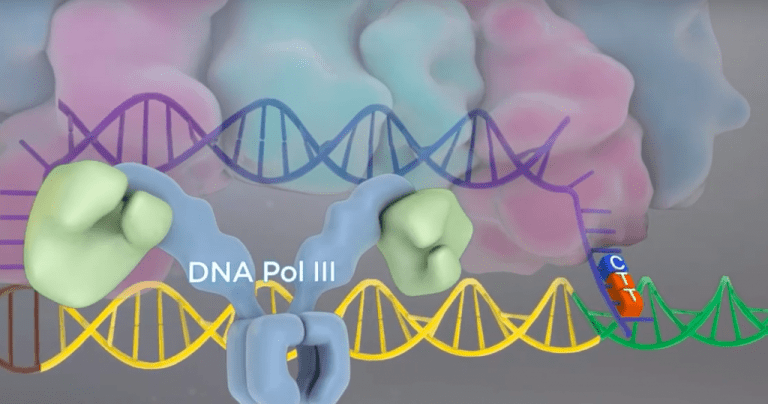Het eiwit dna-polymerase III blijkt betrokken bij het inbouwen van vijandig virus-dna in ‘het geheugen’ van een bacterie. Delftse onderzoekers van het Chirlmin Joo-laboratorium hebben dat in Nature gepubliceerd. Eerder toonden andere wetenschappers al aan hoe twee bacteriële eiwitten het dna van een vijandig virus in stukjes knippen om het op te slaan in het eigen genoom – het geheugen van de bacterie.
Onderzoekers uit Delft ontdekten dat er nóg een enzym betrokken is bij dit proces: dna-polymerase III, bekend van zijn rol bij het kopiëren van dna. Dit enzym heeft een ‘backspace-functie’ waarmee het fouten bij het kopiëren kan herstellen. Die functie wordt, naar nu blijkt, ook gebruikt om vijandig DNA op maat te snijden. Onderzoekers zien kans op een beter ‘dna-logboek’. Bacteriën worden daarbij gebruikt om veranderingen in een cel op te slaan en daarmee bijvoorbeeld de ontwikkeling van een tumor te volgen. Tot nu toe lukte dat nog niet in menselijke cellen. (SvdB)
 Dna Polymerase III snijdt het virus-dna op maat in een screenshot uit de animatie van onderzoeksleider Sungchul Kim.
Dna Polymerase III snijdt het virus-dna op maat in een screenshot uit de animatie van onderzoeksleider Sungchul Kim.
Sija van den Beukel / Freelance journalist


Comments are closed.